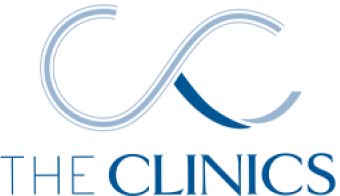
Otoplasty
Otoplasty, also known as ear pinning surgery or ear reshaping, is a surgical technique that changes the size, shape or position of the ears.

What is Otoplasty?
Otoplasty, also known as ear pinning surgery or ear reshaping, is a surgical technique that changes the size, shape or position of the ears. The otoplasty procedure is most commonly associated with ear surgery for children between the ages of 6 and 7. Otoplasty in adults is sought by individuals who want to improve their overall facial symmetry and appearance.
FAQ’s
What’s involved with otoplasty?
Techniques may vary based on individual needs; however, during otoplasty the surgeon makes incisions behind the ear to reshape the cartilage. Sutures are then used to secure the ear in a more “tucked in” position. The incisions are strategically hidden in the natural creases behind the ear.
Can otoplasty be combined with other procedures?
Yes, otoplasty is sometimes performed with other cosmetic surgery procedures such as a facelift or rhinoplasty.
What are otoplasty complications?
Like with any surgery, otoplasty may result in complications such as infection, bleeding, scarring, or reaction to the anesthesia. It’s also possible to be dissatisfied with the results. For this reason it’s very important to choose a qualified and experienced surgeon.
We invite you to book a consultation with one of our expert plastic surgeons to find out if otoplasty is right for you.
Otoplasty Quick Facts:
| Cost of Otoplasty | TBD |
|---|---|
| Duration of Surgery | 1-2 hours |
| Hospital Stay Required? | No |
| Stitches Removed | 5-7 days |
| Days of Social Downtime | 1 week |

After Surgery:
Downtime and recovery: Each person experiences otoplasty recovery differently. Your unique healing journey will be based on your otoplasty procedure and how well your body heals. Below are some general guidelines for what you can expect:
1 Day Post-Op: Immediately after surgery you’ll have a bandage or dressing around your ears to protect the surgical site. It’s normal to experience swelling, bruising and discomfort. Any pain can be managed with prescribed or over-the-counter pain medication.
1 Week Post-Op: Swelling will start to gradually subside after 48 hours. Make sure to rest with your head elevated to minimize swelling. Keep the bandages in place as directed by your surgeon. After your initial follow up appointment in 5-7 days, your surgeon may replace bandages with a lighter dressing, particularly to wear at night to maintain the new ear shape.
Make sure to get plenty of rest during the first week. Avoid strenuous physical activity, bending over or lifting heavy objects. Follow your surgeon’s homecare instructions carefully to ensure your recovery is going smoothly.
2-4 Weeks Post-Op:
Swelling and bruising should be most resolved. Avoid putting pressure on the ears. Be careful not to sleep on your side or press your ears against a pillow while sleeping during this time.
Long-term recovery:
The final results of otoplasty may take several weeks to months to be fully visible.
How to Prepare for Otoplasty
Do your research: A consultation and medical evaluation with a qualified otoplasty Surgeon is the first step in preparing for surgery. Especially in the case of minors, the surgeon will consider physical and psychological factors to ensure someone is a suitable candidate for otoplasty.
Quit smoking: If you’re a smoker it’s best to quit smoking at least six weeks in advance. Nicotine and other chemicals in tobacco can constrict blood vessels and impair your body’s ability to heal adequately post surgery.
What to Expect Before Surgery:
Follow pre-operative instructions: You will be provided with detailed pre-operative instructions by your surgeon. These may include avoiding medications that promote bleeding, making sure you have all the medications you’ll need post-operatively and when to stop eating and drinking the night before.
Arrange for help: You will need someone to pick you up from the clinic or hospital and take you home. Having someone nearby to help you with basic tasks and medications for the first few days following surgery is recommended.
Plan for your recovery: Take the necessary days off school, work or other commitments, depending on the complexity of the procedure. Prepare a comfortable recovery area at home, with items such as soft pillows, ice packs, and entertainment to help pass the time during your recovery.
Why Have Otoplasty?
Although it’s typically performed to minimize protruding ears, cosmetic ear surgery can also correct congenital ear deformities or misshapen ears. Here are some other reasons to have otoplasty other than surgery for protruding ears

Face-ear proportions
Otoplasty can correct ears that are disproportionately large in relation to the face.

Injury or Trauma
Otoplasty can address ear deformities resulting from trauma or injury, offering a solution to reconstruct and repair such concerns.

Lop Ear
Also known as Cup Ear, this condition is characterized by the upper part of the ear being folded over or curled. It can be corrected through otoplasty.

Torn Earlobes
Otoplasty can be used to repair torn earlobes caused by accidents, trauma, or from wearing heavy earrings.
ELEGIBILITY The Ideal Candidate for Otoplasty
The Ideal Candidate for Otoplasty
The ideal candidate for otoplasty is someone who wishes to reshape and reposition their ears for aesthetic reasons or to correct ear deformities. Here are some other factors to consider:
Psychological maturity: The individual should have an understanding of the procedure and desire to improve the appearance of their ears. Otoplasty often helps to boost confidence and self-esteem in children and adults.
Sufficiently developed ear cartilage: It’s not recommended to perform otoplasty on children younger than 5-6 years old as their ear cartilage has not fully matured and become stable.
Good overall health: A person should be in excellent health and a non-smoker. This includes having no serious physical conditions that could affect the outcome or be a contraindication to surgery and general anesthesia.
Have realistic expectations: The ideal candidate should have realistic expectations about what can and cannot be achieved with otoplasty. A thorough consultation with a qualified plastic surgeon will help to ensure satisfaction with the procedure.
Be committed to recovery: Although the recovery time is minimal, otoplasty does require some downtime. Candidates should be prepared to take time off work or school and follow the surgeon’s post-operative care instructions.




